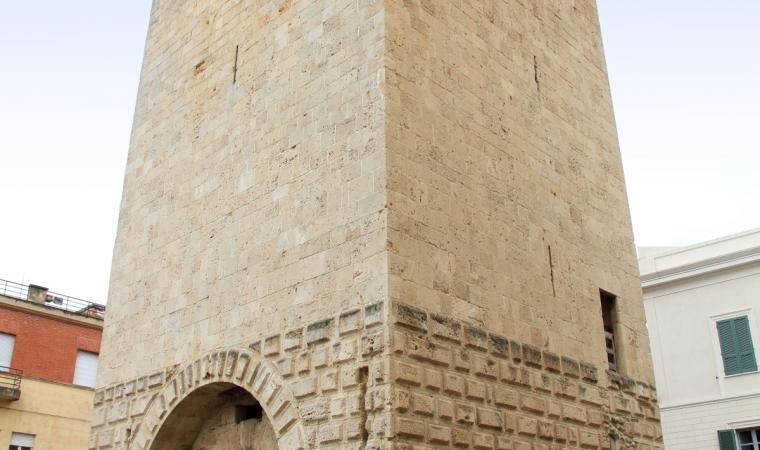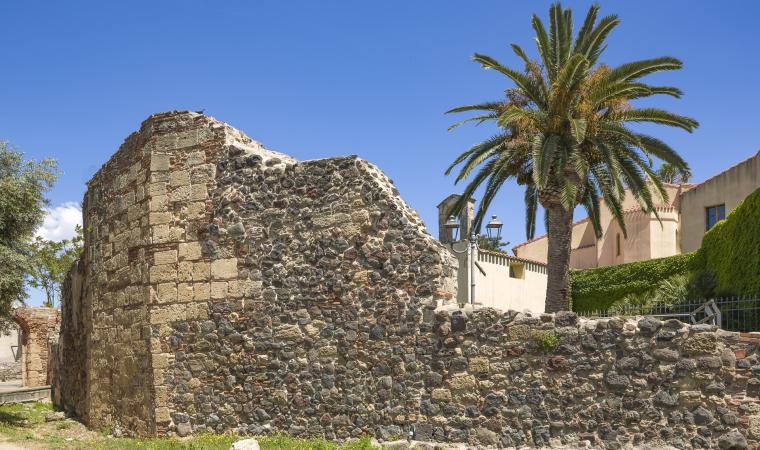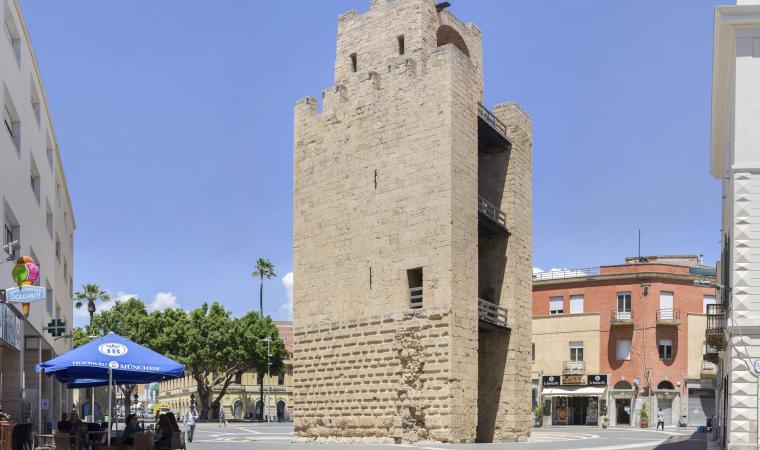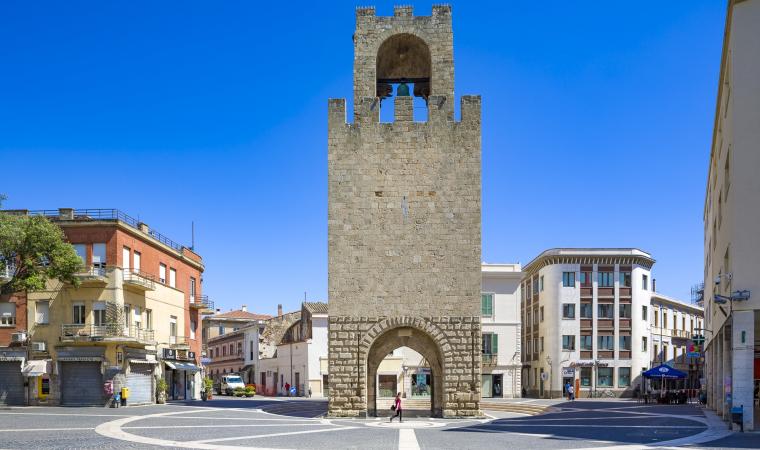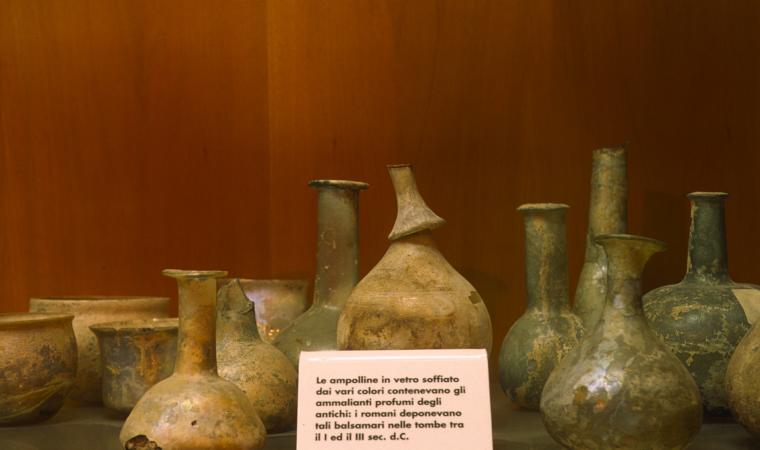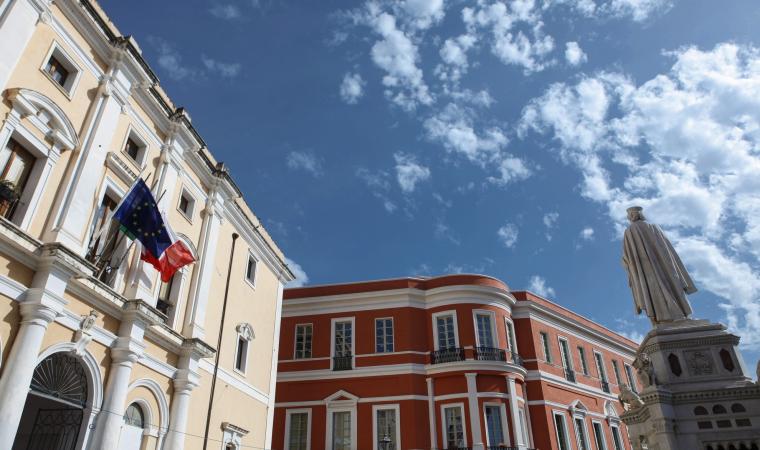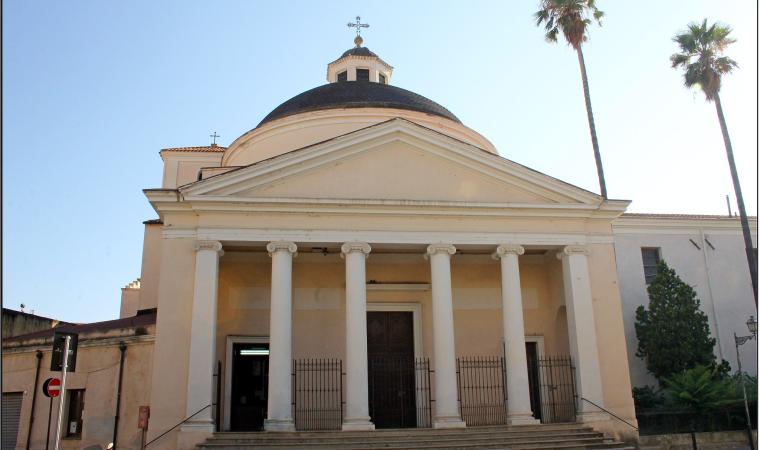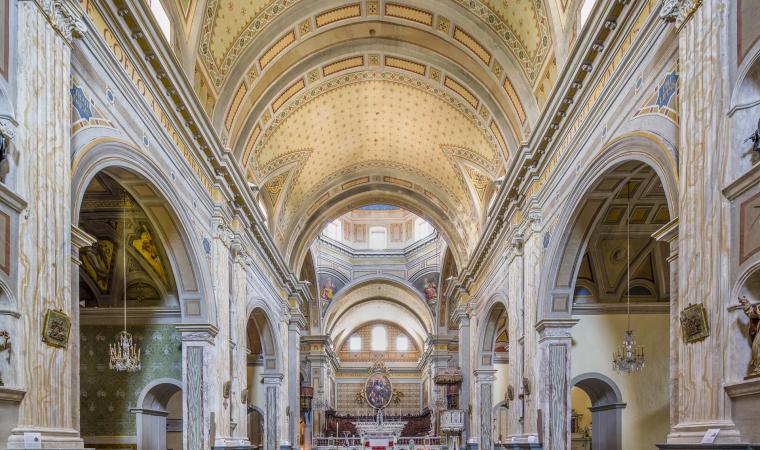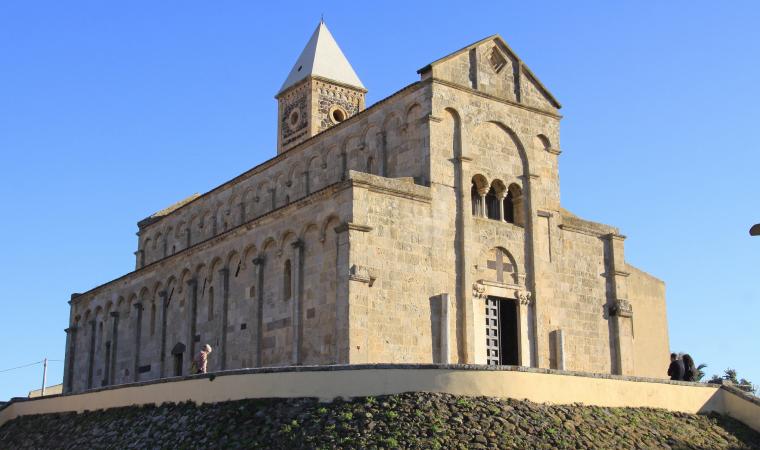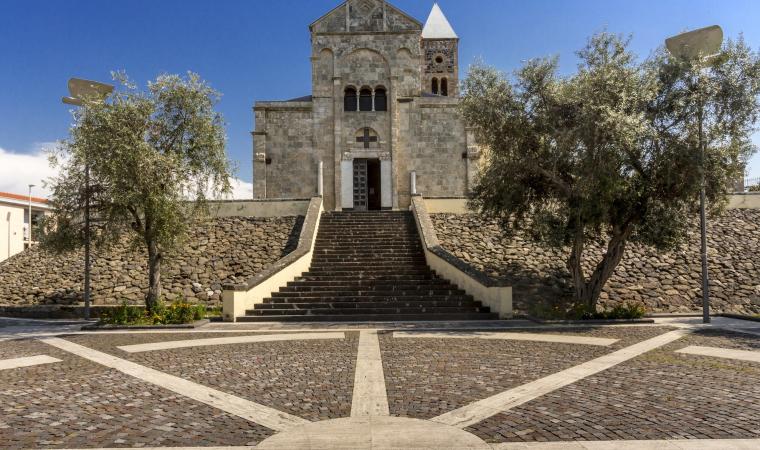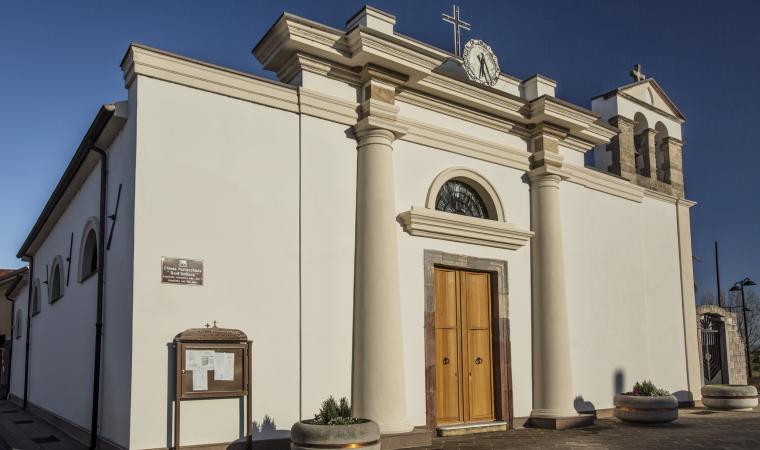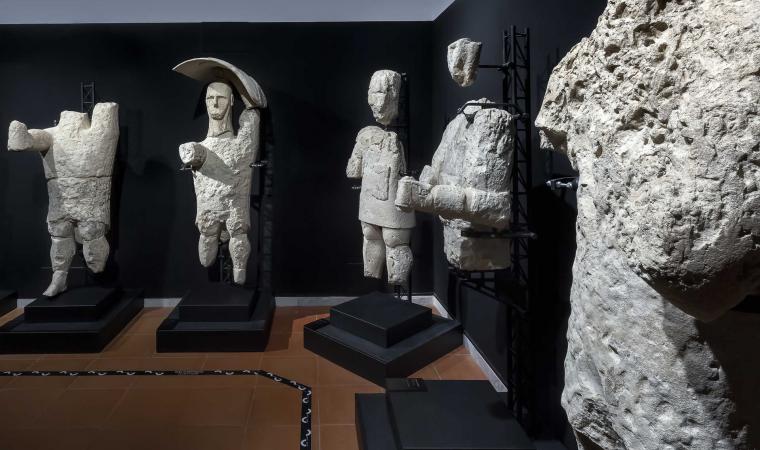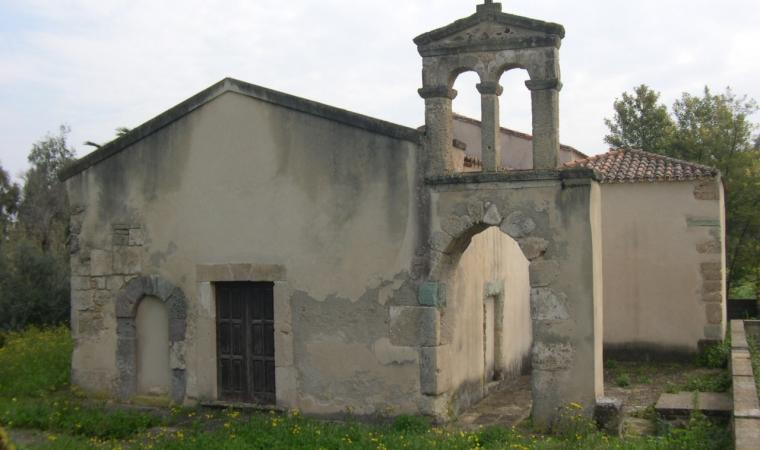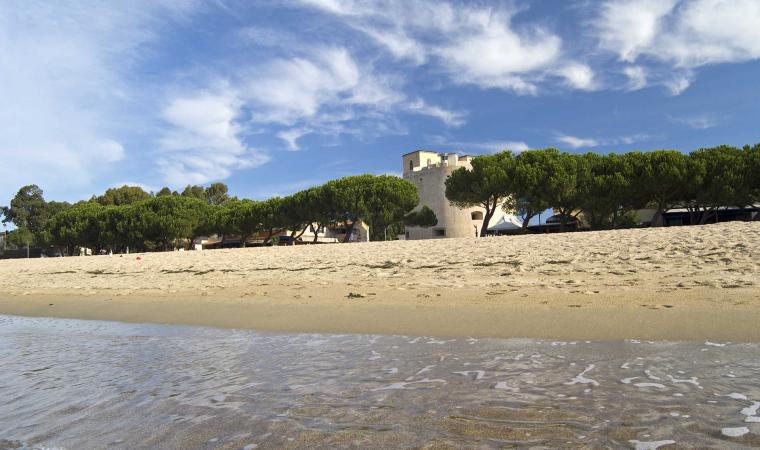It was originally known as de Port'e Ponti, because it led to the bridge on the Tirso river, after which documents define it as 'of Saint Christopher', because a retable of the saint was kept inside it. The tower of Mariano, originally joined to the town boundary walls, today stands isolated in the middle of Piazza Roma, in Oristano, an evident trace of the fortifications that were lost. It dates back to precisely 1290, as is shown by the inscription over the pointed arch from which, during the Middle Ages, a portcullis was pulled down at sunset to close the entrance to the town. Every year, on Carnival Sunday and Tuesday, on the occasion of one of the most attractive and crowded events linked to the identity of Sardinia, Sa Sartiglia, the tower is an obligatory and evocative point of passage for the knights engaged in the equestrian joust.
The tower of Mariano was the southern point of entry into Oristano: it was built by Pisan workers, along with the city walls, using sandstone blocks recycled from the ancient town of Tharros - of which Oristano is a direct descendant - on the behest of judge Mariano II. The original building dates back to the end of the 13th century and the Crown of Aragon later intervened to bring about some modifications to it. Overall, it stands 28 metres tall and consists of two overlapping buildings, which are both square in shape. The first building is 19 metres high with sides that are 7 and a half metres high and there are five Guelph merlons above each side. This building has three floors: on the first floor, two doors connected to the patrol path opened up. You will also notice two embrasures, while a further three open on the second floor. The third floor is the base for the second building, which is a turret, nearly 10 metres high, with three Guelph merlons on each side. Here, a round-arched barrel vault opens up, where a bronze bell was placed in 1430.
The tower is the most significant legacy of the town boundary walls, which ran around the entire perimeter of what was then Aristanis, the capital of the giudicato of Arborea. It was interrupted by two gates protected by the tower of Mariano to the north and that of San Filippo to the south, which collapsed in 1872. The fortifications, which were approximately six meters high, divided the town into districts. The tower of Portixedda and a few ruins still stand in Via Cagliari, Via Mazzini, Via Solferino and in the grounds of the preschool “Asilo Boy”. To complete your historical-artistic tour of the town, visit the Antiquarium Arborense museum, inside Palazzo Parpaglia, as well as the Neoclassical church of San Francesco, the Gothic church of Santa Chiara and the cathedral of Santa Maria Assunta (1130).


